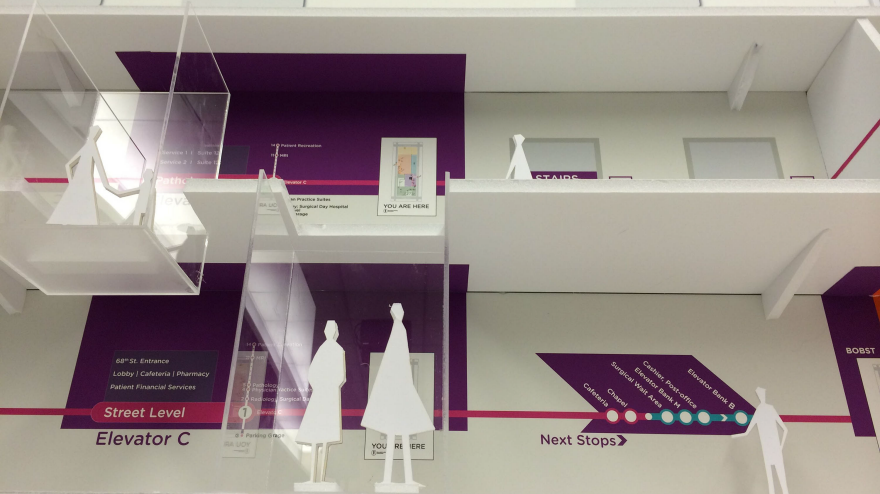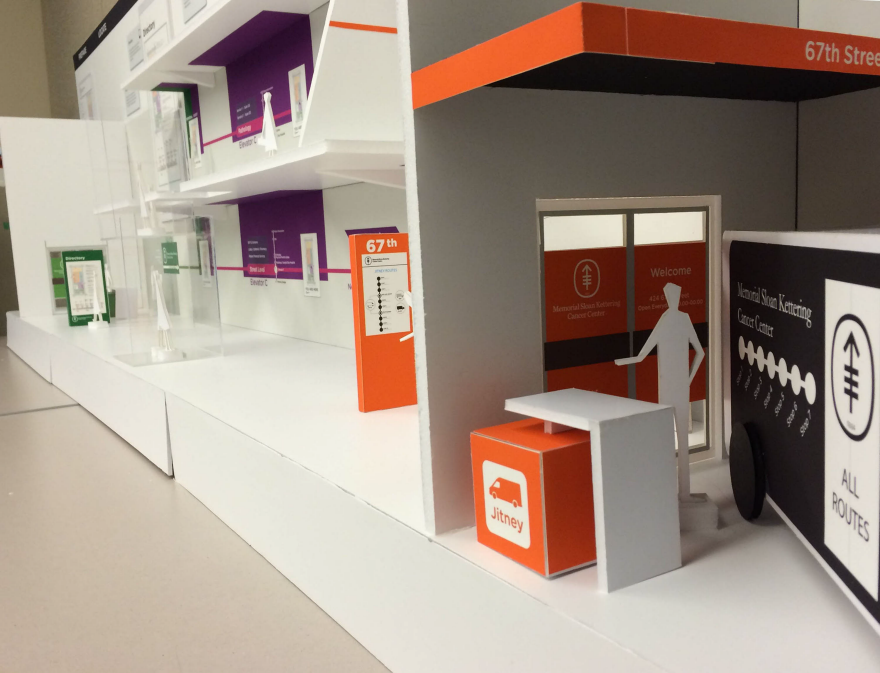

Assignment
The battle through cancer isn’t an easy one, not for the patients nor for their family and friends. It is a sensitive state, and the last thing they need at that stage is to struggle finding their way around while getting their treatment at the hospital.
Wayfinding design at the hospital often left patients confused and frustrated. They felt lost or intimidated with information. This project focused on assisting Memorial Sloan Kettering Cancer Center (MSKCC) in providing a system that would put the needs of patients and families first as well as give clear, concise information through easy-to-follow directions.
The solution: a wayfinding experience that made patients feel confident, welcome, and at ease in a way that accommodates MSKCC’s complex architectural needs, naming conventions, and brand guidelines. The wayfinding design will be prototyped soon at MSKCC’s main hospital and promises to empower the patients to better cope with the biggest fight of their lives, allowing the MSKCC family to provide them with the best care.
Synopsis
The Memorial Sloan Kettering Cancer Center (MSKCC) is a compound of health care facilities spread throughout New York City that aims to provide world-class cancer treatment, part of which includes providing the best patient experience possible. Their growth and physical acquisitions over the past 100 years has caused their main campus to be a hodgepodge of connected buildings with different architectural styles and unique physical challenges, leading to a disjointed experience for patients, visitors, and staff. Currently, wayfinding design at MSKCC is nothing but chaotic: signage from different eras and viewpoints clutter the landscape and lacks a strategic, cohesive approach to this essential, yet often overlooked element of the user experience.
Knowing this, the team was given the task to understand the operational needs of the main building and propose a better wayfinding system. The solution needed to be an analog solution, work with the existing infrastructure, coexist with the new brand guidelines, evolve with their growth and the changing needs of their environment, and be scalable in order to be replicated in their satellite facilities throughout the city.
Throughout the 15-week process, the team took a human-centered approach and used many methods and techniques to gather information, gain insights, and get inspiration: observation and emersion in the space; stakeholder interviews with staff, patients, and caregivers; an ideation workshop; and two prototyping trips including in-hospital prototyping, digital prototyping, feedback, and intercepts. What was created was a design strategy along with specific design recommendations to help MSKCC move forward in implementing a plan for wayfinding design throughout its facilities. A diorama was also created to demonstrate how the design recommendations work as a system throughout a space.
From extensive contextual observations of the space and interviews with key stakeholders (facilities, architecture and planning, medical staff), the team live prototyped two disparate solutions to solve wayfinding design challenges: a neighborhood approach and a line/connector approach. Ultimately, they came up with a final hybrid solution that provides the right level of detail at the right time.
By incorporating strong graphical elements with directional cues and easy-to-digest signage, the final solution sought to give patients and caregivers a little bit of autonomy in their hospital experience. Battling cancer is challenging enough. Finding your doctor shouldn’t be.
Tags:
Students
Jeremy Alexis
Anushree Jain
Natalie Scoles
Andrea Zuniga
John Lee
J.M. Downey
Nabila Nowrin